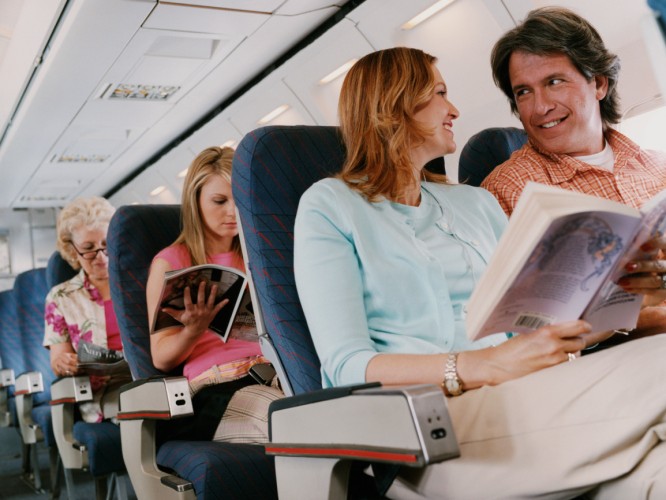
Airlines and their partners—especially co-branded credit cards—lavish miles on you these days. The challenge isn’t accumulating miles; it’s in finding ways to use them. And getting full value can be really tough.
This biggest barrier—and this shouldn’t be a surprise to anyone—is that scoring a frequent flyer seat, at the low or “saver” mileage value, where and when you want it is a really tough challenge. I reported earlier this year on data developed by IdeaWorks showing overall success ranges from a decent 50 percent to 60 percent for American, Continental, and United to a dismal 25 percent or so for Delta and US Airways.
Best Use of Miles
The situation is even worse in business class, says AlphaFlightGuru‘s Tim Gibson. He and I agree that the best use of frequent flyer miles is for international trips in business class, and here, he says, a typical traveler’s initial success rate is less than 10 percent. His company specializes in helping business travelers get the most from their miles, and he says his company can ultimately “help 80 percent of the people.” But his agents really have to work at it, sometimes mixing and matching airlines within alliances or even use different alliances.
Secret Strategy
But the strategy with the best odds of success, notes Gibson, is to wait to confirm seats until three to seven days prior to departure. That’s the time when airlines finally decide how many seats they really aren’t going to sell and release them for frequent flyers. Even when clients have to set firm travel dates well in advance, AlphaFlightGuru helps them by providing highly discounted consolidator tickets when the mileage awards don’t become available.
My own experiences confirm Gibson’s view, although I’ve often found even more trouble. Service at my home airport (Medford, Oregon) is almost entirely on regional airlines, so just about anywhere I want to fly requires at least one connection. Getting seats on a single flight is tough enough; getting seats on a decent connection is almost impossible. Right now, for example, Delta’s online booking system shows no one-week trips on any dates through June from Medford to Paris at the lowest award level, in either economy or business class.
Biggest Return on Investment
Why is international business class the best use of miles? Because those awards give you the biggest return. Even at a sale price, a round-trip business-class ticket to Europe or Asia is likely to cost somewhere around $5,000. On most lines, that trip would require around 100,000 miles for a “saver” award, so your frequent flyer credit is theoretically worth about 5 cents a mile. By contrast, using 50,000 miles for an economy international ticket you could buy at a sale fare of $750 makes the miles worth a cent and a half. And at the other end of the scale, these days a long-haul domestic coach ticket generally costs less than $500, so if you can score a seat at the typical 25,000 miles, your credit is worth two cents a mile or less.
Of course, when you’re trying to value your miles realistically, you have to apply a big discount factor to compensate for the difficulty in finding seats. “Get almost any seat” awards generally require at least twice the “saver” requirement—often more—which automatically devalues your miles by 50 percent.
Non-Travel Purchases
How about using your miles for non-travel purchases, as some airlines now urge? The reason is simple: You realize even less value than using your miles for travel. In most of the programs I’ve examined, the purchase value is about a half cent a mile, and I’ve never seen a deal valuing credit as high as even one cent a mile.
Given the problems of scoring seats, I believe that if you aren’t interested in overseas business class, you’re better off accumulating miles through one of those “bank buys a ticket” credit cards programs or even a straight cash-back card. These days, quite a few cards average around two cents for each dollar you charge, and that’s usually enough to buy coach tickets without worrying about seat limitations.
Ed Perkins on Travel is copyright (c) 2011 Tribune Media Services, Inc.
We hand-pick everything we recommend and select items through testing and reviews. Some products are sent to us free of charge with no incentive to offer a favorable review. We offer our unbiased opinions and do not accept compensation to review products. All items are in stock and prices are accurate at the time of publication. If you buy something through our links, we may earn a commission.
Related
Top Fares From
Today's Top Travel Deals
Brought to you by ShermansTravel
France: 8-Night Paris, Avignon & Nice...
Infinity Worldwide Vacations
 vacation
$2880+
vacation
$2880+
Poconos: 3 Nts in Garden of...
ResortsAndLodges.com
 hotel
$305+
hotel
$305+
7-Nt Canada & New England Cruise,...
Princess Cruises
 cruise
$839+
cruise
$839+



